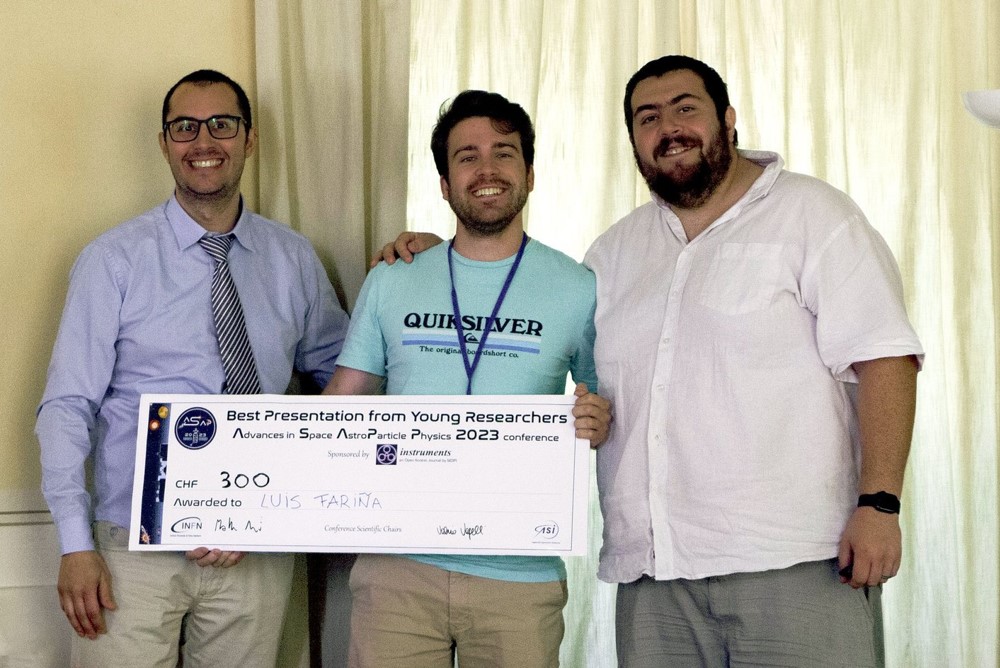We are pleased to announce the winner of the Best Presentation Award that Instruments (ISSN: 2410-390X) sponsored at the ASAPP 2023—Advances in Space AstroParticle Physics: Frontier technologies for particle measurements in space Conference, held on 19–23 June 2023, Perugia, Italy. Congratulations Luis Fariña Alonso!

“Gamma-ray performance of the HERD trigger system” by Luis Fariña Alonso
The High Energy cosmic-Radiation Detection (HERD) facility has been proposed as one of the main experiments on board the China Space Station. HERD is scheduled to be installed around 2027, and to operate for at least 10 years. Its main stated scientific goals are the study of the cosmic ray spectrum and composition up to the ~PeV energy range, indirect dark matter detection, and all-sky gamma-ray observation in the 100 MeV–100 GeV energy range.
HERD will feature a novel design in order to optimize its acceptance per weight. It is composed of a central 3D imaging calorimeter (CALO), surrounded on top and on its four lateral sides of its faces by complementary subdetectors, including the fiber tracking detector (FIT), the plastic scintillator detector (PSD), and the silicon charge detector (SCD). A transition radiation detector (TRD) is installed on one of its faces for calibration.
A dedicated trigger, dubbed the ultra-low-energy gamma-ray (ULEG) trigger, is required to enable the detection of energy gamma rays down to 100 MeV. The ULEG trigger design is based upon the search for energy deposition patterns on the FIT and PSD, compatible with the conversion of a gamma ray within the FIT volume, and resulting in enough FIT hits to allow for a good-quality gamma-ray direction reconstruction. We describe the current status of the design of the ULEG trigger system, and of its hardware implementation. We also characterize its performance in detecting gamma rays, as inferred from Monte Carlo studies.


